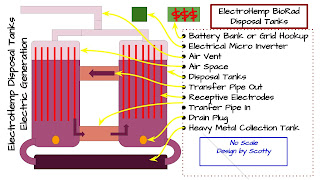The Future Phytoremediation Assisted Soil and Water Cleanup Pilot Study Activity will include:
- Business Partnerships
- Job openings
- Science and Scientific collaboration
 |
| ElectroHemp Green Remediation Intro |
ElectroHemp Job Opportunity Examples: 9 or More job slots with possible Dual and Tri job responsibilities.
- Volunteers
- College Internships
- Hazmat Equipment Operator / Driver
- Greenhouse / Horticulturalists
- Environmental Scientist Laboratory & Testing Technician
- Mechanical + Equipment Mechanic
- Electronics Equipment Installation + maintenance
- Records and Bookkeeper
- Attorney Environmental + Patents
- Spokesmen - Advertising
- Marketing - Sales - Contracts
If you are interested in joining the ElectroHemp team or have a property in the St.Louis Region you need assistance with we are interested in working with you.
 |
| ElectroHemp cleans soil and water with a Phytoremediation assisted process that turns pollution into cash. |



























